From Generic to Individual Attention: Are You Practicing What You Preach?
Overview
In this chapter, we will focus on you as an engagement role model for your employees. Of course, everybody wants to be a role model, but what are the requirements?
As you make decisions about what you will do to be a role model, we encourage you to consider that your employees need to feel safe in an environment where they are part of something bigger than themselves. As their manager, you can make a difference in what Erickson and Gratton (2010) call the “signature experience” of each employee through your modeling.
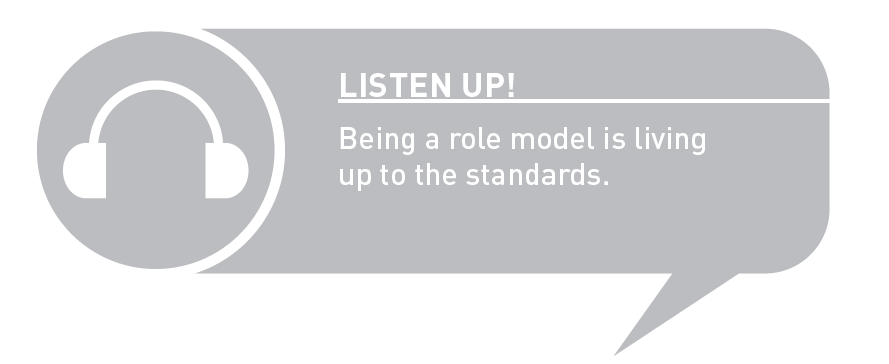
Manager as a Role Model
We acknowledge the multiple demands on your time and attention as a manager; however, your most important responsibility is being a role model for employee engagement. As a role model you should:
- Demonstrate consistency in words, actions, behaviors, and language.
- Be aware of others’ perceptions of yourself and shape those perceptions as much as possible.
- Comply with rules and regulations.
- Be a policy advocate.
- Understand that everything you do is tied to the organization’s vision, mission, values, strategies, and objectives as well as to the company’s value proposition leading to business results.
- Shape the individual employee engagement experience.
- Know your role.
- Be knowledgeable of employees’ roles and responsibilities.
- Be the voice of the management.

What a great responsibility. Your employees are a reflection of you. Remember: Good intentions aren’t enough.
We invite you to keep in mind that “one size does not fit all” when making decisions about how to foster employee engagement among your employees as a role model. Therefore, you will need to recognize and celebrate differences as well as similarities in your team. Role models demonstrate achievements. As part of your role, you can be fair and professional; that does not mean that you are a “yes” person.
It is now time to look at your characteristics as a role model.

Now it’s your turn.
The Manager’s Role Model Self-Assessment presented in Worksheet 9.1 contains a list of characteristics typically associated with being a role model. Please indicate which ones describe you as “yes,” and for those that do not describe you indicate as a “no” under the appropriate column.
For those characteristics that you identified as “yes,” please indicate if you believe that you still need to improve on that characteristic. Likewise, for those characteristics that you identified as “no,” please identify if you need to acquire them if they are important for you.
Worksheet 9.1 Manager’s Role Model Self-Assessment
|
CHARACTERISTIC |
YES |
NEEDS IMPROVEMENT |
No |
Need to Acquire |
|
Corporate citizen |
||||
|
Strong business sense |
||||
|
Goal-oriented |
||||
|
Knowledgeable |
||||
|
Honor your reputation |
||||
|
Integrity |
||||
|
Focus |
||||
|
Competitiveness |
||||
|
Persistence |
||||
|
Listening (hearing what they are not saying) |
||||
|
Discipline |
||||
|
Able to provide structure |
||||
|
Respect |
||||
|
Avoid fear |
||||
|
Supportive |
||||
|
Promote learning and development |
||||
|
Measure return-on-investment (ROI) |
||||
|
Aware of things that people value |
||||
|
Able to or willing to change |
||||
|
Value diversity |
For how many characteristics did you place a mark under “yes”? How many of those that you marked as “yes” are also identified as “needs improvement”? For how many did you do so under “no”? How many of those that you marked as “no” are also identified as “need to acquire”? Tabulate your answers in Worksheet 9.2.
Worksheet 9.2 Results of Manager’s Role Model Self-Assessment
|
YES |
NEEDS IMPROVEMENT |
NO |
NEED TO ACQUIRE |
|
|
|
|
|
Now we will look at those characteristics that you identified as “yes” and also “needs improvement” in Worksheet 9.3. Select the three characteristics that you believe are the most important for you and the three actions that you will take to do so.
Worksheet 9.3 Top Three Characteristics to Improve
|
NEEDS IMPROVEMENT |
ACTIONS |
|
|
|
|
|
|
|
|
|
Now let’s take another look at those characteristics that you identified as “no” and also “need to acquire” in Worksheet 9.4. Select the three characteristics that you believe are the most important for you to acquire and the three actions that you will take to do so.
Worksheet 9.4 Top Three Characteristics to Acquire
|
NEED TO ACQUIRE |
ACTIONS |
|
|
|
|
|
|
|
|
|
This exercise is a starting point for you to strengthen your position as a role model for engagement for your employees. Remember that, most importantly, you show how engaged you are with your company by demonstrating consistency in everything you do and say with conviction as you spend time with your team and your employees.

Based on your answers to the previous questions, you may want to invest some time on your own development, perhaps through participation in management or supervisor programs or other activities. By doing so, you would also be setting an example of your interest in continual professional improvement for your team. In other words: being a role model.
Characteristics of a Role Model
We will now discuss those characteristics that we believe are most significant for you, to be not only a manager, but also a role model of engagement.
Listening (Hearing What They Are Not Saying)
The key to establishing good relationships with your employees and with others is listening carefully to what they say as well as to what they do not say. By doing so, you will obtain valuable information about them as individuals and as employees; information about these two deeply intertwined dimensions will help you to guide your efforts to meet their needs and reach your engagement goals. As you listen to your employees, you will be modeling this important skill while you determine what resources they need and what obstacles you need to remove.
Listening (hearing what they are not saying) will also allow you to calibrate what you can realistically delegate to them so that you can dedicate your energies to other tasks. By gradually delegating tasks to them, you will promote their ownership and empowerment of the final product, which in turn will typically bring increasing levels of engagement as a result of a sense of accomplishment.
You will be able to listen to your employees only if you create a climate of trust where they can speak freely and confidentially without fearing negative repercussions if they disagree with you on a particular issue. Only then will you be able to really learn about them and from them, and to find opportunities to provide them with helpful feedback and coaching. Soon they will be practicing their listening skills with each other.
Communication
All exchanges with employees entail some type of communication. We reiterate the importance of consistency in messages as well as of establishing a climate of openness and trust where employees feel comfortable discussing multiple issues with you as a manager. As a role model, you will demonstrate the behaviors that you would like your employees to display, such as waiting for them to finish their thoughts, taking turns, explaining ideas clearly, using appropriate language, conveying emotions appropriately, showing appreciation, and disagreeing respectfully. Your nonverbal communication, including voice quality, physical gestures, and space use, should be congruent with your verbal communication at all times so that they feel valued. Again, your employees will be paying attention to everything that you convey.
As you diversify the available ways in which your employees complete their work, you will also need to diversify the means that you use to communicate with them. We encourage you to use available technologies and to tailor their use to the individual needs and experiences of your employees based on what works best for each one of them. For instance, some members of your team would prefer face-to-face communication, in person or virtually, while others are perfectly comfortable with short emails and text messages; still others may prefer telephone calls. The key point here is to communicate frequently using available means, using technology as an aid to increase productivity instead of something to use for its own sake.
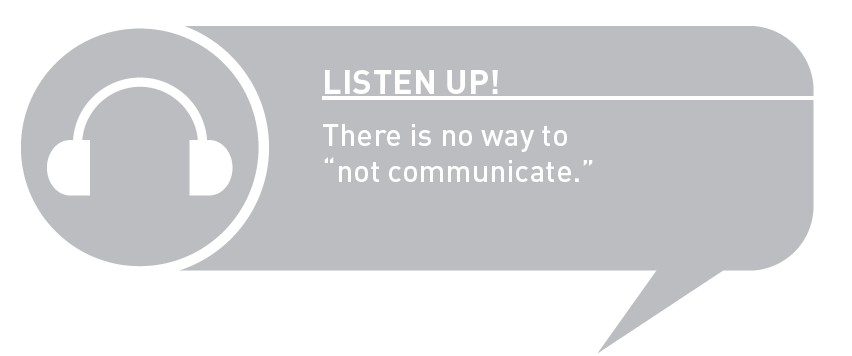
Value Diversity
In today’s workforce, diversity takes multiple forms. These include typical demographic characteristics such as age, gender, religion, veteran status, and ethnicity as well as socioeconomic status and educational level. They also include some characteristics that are not so typical, such as sexual orientation. You need to ensure that all of your employees are able to understand the value of individual uniqueness and how each one contributes to the overall success of the team as part of your day-to-day responsibilities. Most importantly, you need to demonstrate openness and inclusiveness to employees who have different characteristics in your everyday interactions with everyone so that all of them see you consistently “walking the talk.” Remember that valuing diversity entails more than complying with the applicable laws.

Knowledgeable
As a manager, you are a major source of information for your employees. Although it is not realistic to expect you to know everything about everything, it is reasonable to assume that you master your responsibilities. You should also be able to point others in the right direction to obtain the resources that they need. In the Information Age, at a very minimum, you will be expected to know where to find what you need to know.
Being knowledgeable also means knowing what you do not know, so that you can determine if it is important for you to learn it or not. If you decide that learning something is important, then you have multiple options to obtain that knowledge; we mention some of them in the context of learning and development activities to foster employee engagement in other chapters of this book. We invite you to keep in mind that you do not need to learn everything that you do not know; being selective about what you need to know will allow you to prioritize and focus your efforts.
Your employees will look up to you as a role model in terms of the knowledge that you have, how you use it, and how you show evidence that you have it or do not have it.
For instance, you may be a subject matter expert on a topic who openly shares information with others, or you could only share information with others on a need-to-know basis. Which one of these two types of subject matter experts do you want them to be? Remember that you are always sending messages to others and your employees will do as you do much more than as you say.
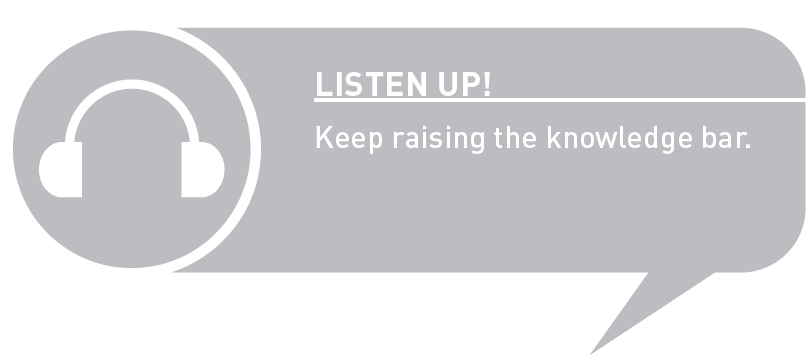
Respect
In today’s work environment, the quality of interactions and relationships with others will be what helps you to get to where you need and want to be. All members of a company share a common purpose: to fulfill the mission and obtain business results from their roles; everyone’s contribution is important. In the end, you obtain results by skillfully working through others; it’s all about treating others how you would like them to treat you. Make sure that your employees see you as someone who values and respects others at all times and not only when you need something. Be keenly aware of how others perceive how you treat others, especially those who perform tasks that may not have as much apparent value in the company. Your employees will be more likely to respect you and each other, and become more engaged to you, if they see you behaving consistently.
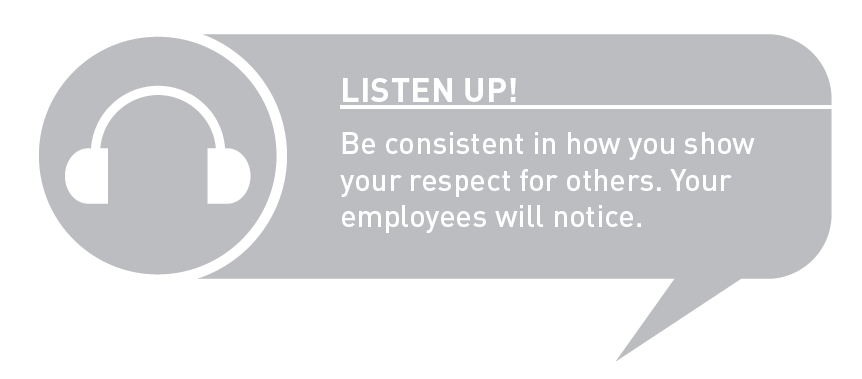
Supportive
One of your many responsibilities as a manager is to encourage others to become the best that they can be. To do this, you may have to step out of the way so that they acquire new skills while making mistakes. As learners, your employees will feel vulnerable and may be afraid to seem incompetent to you. At some point, you will need to come to terms with the value of allowing others to learn in whichever way they do, because in the end, your team and the company will benefit. You will also need to find a way to convey that you are there for them, you will do your best to provide resources and information, as well as, perhaps more importantly, offer a shoulder to lean on without passing judgment.
There will be other times when your employees will be facing personal situations that may require you to be flexible in work-related issues, such as scheduling. You may need to handle expressions of raw emotions or simply allow them some space to solve whatever situation they are encountering. In the end, your respect for privacy and empathy will take you a long way.
Your employees will look up to you, as a manager, to help them in situations such as the ones that we just mentioned. In addition, they will pay particular attention to how you do what you need to do and will, very likely, replicate what you do when it is time for them to assist someone else, which could mean prioritizing someone else’s needs over their own. That someone could be you.
Focus
In today’s fast-paced work environment, we encounter plenty of distractions as a result of competing priorities and messages. As a manager, you face particular challenges as a consequence of the multiple simultaneous demands placed on you and, very likely, the number of these demands will not diminish any time soon.
Although many tout the benefits of multitasking, many others value the capacity to focus on a task or a person at a particular point in time. Obtaining a sense of accomplishment after finishing a series of tasks becomes a source of motivation to continue with other tasks. Receiving the full attention of someone during a meeting reinforces one’s value.
Your employees will easily notice how you organize your work and how you interact with them.
- Do you establish priorities?
- How well do you manage your time?
- Do you try to answer emails during individual meetings with them?
- Are you always in a hurry and cannot seem to get anything done on time?
If you do something and expect them to do something else, you will lack congruence in your behavior; their engagement will be affected accordingly.
Persistence
This characteristic is closely related to focus. As you decide what you will do and what your goals are, you will need to spend time and attention on the relevant tasks. At times, you may not obtain the results that you want as soon as you would like to, so you may need to dedicate more efforts to what you are doing. You may also experience frustration if you do not get what you want when you want it, or if you don’t experience extreme levels of happiness when you finally do.
Your determination to complete what you are doing or to see something through until its logical conclusion will serve as an example to others to do the same, particularly in times when everything seems to have been due yesterday. Likewise, how you control your emotions—both negative and positive—will set a standard for your employees to react under comparable circumstances. If your employees see you follow through tasks with a positive attitude, they will be more likely to do the same when they face a challenging situation. Be consistent.

Some time ago, entering the workforce meant having one career in one company for many years until reaching the age of retirement. Back then, no one dreamed about reinventing himself several times in different careers or changing jobs and companies repeatedly. Since succeeding in today’s workplace is all about handling change, you need to be able to or be willing to change to adapt and evolve. How would you respond to the following questions about your ability to change?
- Do you always follow the same routines and procedures to complete your work?
- Do you intend to remain in the same type of work for the rest of your career?
- Do you cringe at the thought of trying something new in your professional or your personal lives?
- Do you look for alternate and, perhaps more efficient, ways to complete your work so that you can get different results?
- Are you willing to go out of your way as well as to spend time and energy to acquire new skills and competencies?
- Do you see yourself in the future doing something that you did not expect when you started your career?
Flexibility, flexibility, flexibility is what will help you to continue to make progress in your career and is what you need to convey to your employees. They need to be able to or be willing to change, particularly under times of company uncertainty. As you demonstrate this capability and show its benefits, your employees will see how this quality can benefit them and the company. Thus, they will very likely be more eager to go beyond what is expected of them. Remember that flexibility is not saying “yes” at all times.
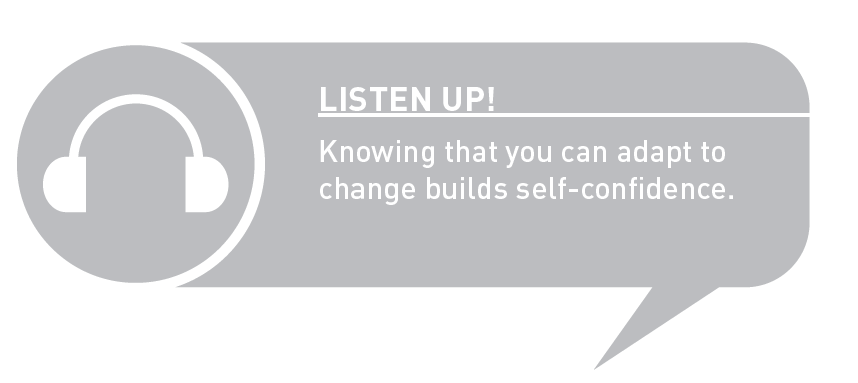
Aware of What People Value
As you interact with your employees, you will learn what is important for them professionally and personally. This information will be very useful for you—as a manager and as a role model—because it will allow you to address their particular needs at any given time. For example:
Ronald prefers to be addressed at work by his last name, Smith, instead of his first name. Karen dislikes the use of last names in the workplace. Address each one as he or she prefers. Be particularly careful with nicknames.
Kevin favors public recognitions. Jeff would rather receive a handwritten note from you for a job well done when no one else is present. Recognize Kevin in public and Jeff in private.
By paying attention to your employees as individuals beyond their role in your company, they will feel appreciated. Very likely, your employees will become more engaged because they will have a stronger emotional connection with you simply because “you noticed.”
As your employees detect how you distinguish those differences without showing preferences for individuals in your team, they will also get to know you and each other at a deeper level. This knowledge will help them to work together better—particularly under stressful conditions where emotional reactions can create significant disruptions.
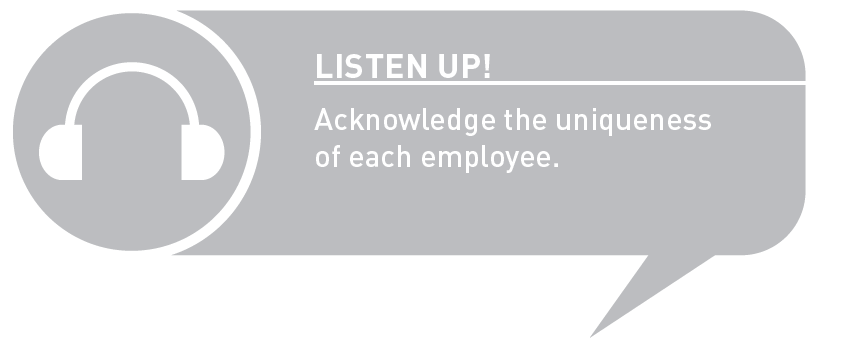
Avoid Fear
Fear is one of the most paralyzing emotions that a human being can feel in the workplace. It is often the result of not knowing what will happen under conditions of perceived threat to something valuable. Let’s see two examples.
Ruth could be afraid of losing her job as a result of a merger or an acquisition because it represents her only source of income. Under the circumstances, her anxiety may lead her to make mistakes that could lead to the undesired result.
Jason could be afraid of losing a coveted spot on a highly visible project that may mean potential career opportunities. By coming across as insecure and afraid, Jason may actually shortchange his chances of remaining in the project, thus actually limiting his options.
In both examples, fear is also the consequence of not having control over what is happening or could happen. You cannot afford to be paralyzed by fear because you won’t be able to see clearly what you need to do. When someone is afraid, she cannot focus on what can be controlled, thus she loses valuable time and energy and projects an inappropriate image of herself.
You cannot become emotionally disconnected and disengaged as a result of your fear. Therefore, you need to avoid fear, or handle it, by increasing your sense of control over what you can control and by finding ways to influence what you can influence. You need to keep your emotions under control so that your employees do not assume that reality is even worse than it actually is and start taking actions, such as leaving the company prematurely.

Promote Learning and Development
We have news for you. Even though you are a manager, you still need to find ways to continue to learn and grow as a professional. You need to attend company-mandated or sponsored learning and development events such as formal classroom-based trainings. At other times you may be required to take online courses. Or you may be given the option to receive coaching or mentoring from an internal or external resource.
You may be reluctant to attend those events or participate in those activities. Perhaps you would rather continue doing what you are doing than stop in the middle of the morning to attend a lecture. Maybe you would prefer to take those online courses from the comfort of your home, but this is not an option given the regulated environment in which you work. Possibly you do not see the value of having someone who can help you to address some blind spots that may be holding you back in your work.
If you do not participate in those events or take those courses when they are required, or even accept support from a well-intentioned mentor or coach, you will be conveying to your employees that you do not really believe in learning and development. Pause for a moment.
Think about how your employees will feel about complying with the same requests—will they be open to the new experiences or will they find ways to avoid participating because they also have a lot of work to do?
Visualize what could happen if your employees do not take those opportunities seriously.
Your company could be subject to fines and lawsuits under the unfortunate event of accidents caused by employees who were not properly trained to fulfill their responsibilities. Your company could simply lose revenue as a result of not having people who are up to date in the latest trends of their industry.
You and your employees will only have a future if you prepare for the challenges that the future will bring. When your employees see the value of learning and development activities and how they benefit from them, they will feel valued; because in the end, what they learn is for them to keep. If you attend those events with them, they will be inspired to continue learning. Make a point of doing so.

We have underscored the importance of you as a manager to serve as an engagement role model for your employees. We have also discussed the most salient characteristics of that important function so that you can be aware of where you are and can make the necessary adjustments to become an even better role model.
For you to be their most effective role model, you need to know more about your own engagement level and how you are communicating that engagement level to your employees. In the next section, you will answer some questions that will help you to see where you are in your own engagement.
Now it’s your turn.
The following questions that compose the Manager Engagement Self-Assessment presented in Worksheet 9.5 address specific components of your own engagement. Please indicate your answer to each one and include any examples of behaviors that show why you answered “yes,” “no,” or “don’t know” under the column labeled “behaviors.”
Worksheet 9.5 Manager Engagement Self-Assessment
|
QUESTION |
YES |
NO |
DON’T KNOW |
BEHAVIORS |
|
Do I feel emotionally connected to my company? |
||||
|
Do I feel emotionally connected to my team? |
||||
|
Do I want to come to work every day? |
||||
|
Are my values and the values of my company aligned? |
||||
|
Do I believe in what my company stands for? |
||||
|
Do I support my company in its mission? |
||||
|
Do I believe that my company is true to its core values? |
||||
|
Do I believe that my company supports its employees? |
||||
|
Do I agree with my company’s position in different topics? |
||||
|
Do I agree with how my company presents itself to others? |
||||
|
Do I support my company in its interactions with external stakeholders (for example, community)? |
||||
|
Do I limit my involvement in my company to my job description? |
||||
|
Do I expect my team to limit their involvement in my company to their job descriptions? |
||||
|
Do I convey my commitment to my company through my actions and behaviors on the job? |
||||
|
Do I convey my commitment to my company through my actions and behaviors outside of the workplace? |
||||
|
Do I believe that my company provides opportunities for growth and development for all employees? |
||||
|
Do I intend to continue belonging to my company for a long time? |
||||
|
Am I willing to dedicate as much time and resources as my company needs to accomplish its goals? |
||||
|
Do I feel fulfilled and energized with what I do at my company? |
||||
|
Do I want to come to work every day because I enjoy what I do at my company? |
||||
|
Do I feel valued for the work that I do? |
||||
|
Do I have the tools that enable me to do my job? |
||||
|
Would I be willing to continue belonging to my company if my pay and rewards were reduced? |
||||
|
Does my manager inspire me? |
||||
|
Would I recommend my company to others as a good place to work? |
||||
|
Do I feel proud to tell people where I work? |
||||
|
Have I always felt this way about my company? |
Count how many questions you answered with “yes,” “no,” or “don’t know” and write the numbers in Worksheet 9.6.
Worksheet 9.6 Results of Manager Engagement Self-Assessment
|
YES |
NO |
DON’T KNOW |
|
|
- If you answered “yes” to between 13 and 17 questions, you seem to be solidly engaged with your company. You are doing fine, but should consider paying attention to those areas which you still need to address.
- If you answered “yes” to 18 or more questions, you are highly engaged with your company. Congratulations! You should still review those questions to which you answered “no” and find out why. Once you do, you will be able to take action to turn those answers into “yes.”
- If you answered “no” to between 13 and 17 questions, you seem to be disengaged with the company. We invite you to think about why this is the case so that you can make the best possible decision for yourself and for the company. What is going on either at the company or in your life that is affecting your engagement with the company? Whatever is happening is, very likely, showing through your words and actions; and unless the reason is personal, others may soon become disengaged.
- If you answered “no” to 18 or more questions, you seem to be highly disengaged with the company. This situation demands prompt and closer attention from you because your high level of disengagement will certainly have a negative effect on your employees. You may even consider seeking support from someone whom you trust to address whatever professional or personal situations you are facing so that you can solve them promptly.
- If your answer to most of the questions was “don’t know,” we invite you to look at those questions again and at the behaviors that you mentioned. Let’s look at an example.
- If you answered “don’t know” to “Do I convey my commitment to my organization through my actions and behaviors outside of the workplace?”, what do you do when someone asks for information about your organization when you are running errands on the weekends? If you provide that information even though you are not working at that time, then you should change your answer to that question to “yes.” If instead you ask them to look up the telephone number of the switchboard and call on Monday, you should change your answer to that question to “no.”
Look at your answers. The patterns that you find in the information that you included in your answers will help you to see specific areas of your career that may be affecting your levels of engagement either positively or negatively. We invite you to consider what you still need to change or adjust to be an even better role model for your employees.

Remember
- Go back to your results of the Role Model Self-Assessment (Worksheet 9.1).
- Review the results of your Engagement Self-Assessment.
- Get to know your employees.
- Model what you want to see in your employees.
- Determine if your challenge with employees is related to engagement or fit.
- Review and repeat.
KEY POINTS AND TAKEAWAYS
-
Role models influence. You are being watched.
-
You make a difference in your employees’ level of engagement.
-
Your most important responsibility is being a role model.
-
Be consistent. You are shaping your employees’ engagement.
-
You show how engaged you are through everything that you do.
-
Invest time in your own development.
-
Listen to what they say and don’t say. Create a climate of trust.
-
Being knowledgeable means also knowing what you don’t know.
-
It’s all about treating others how you would like them to treat you.
-
Encourage others to be their best.
-
Respect and privacy will take you a long way.
-
You could multitask, but don’t belittle.
-
Convey your own flexibility to your employees.
-
Confront fear.
-
Prepare for the future: Practice and preach support for learning and development.
